Lichfield
April 2009 and December 2016
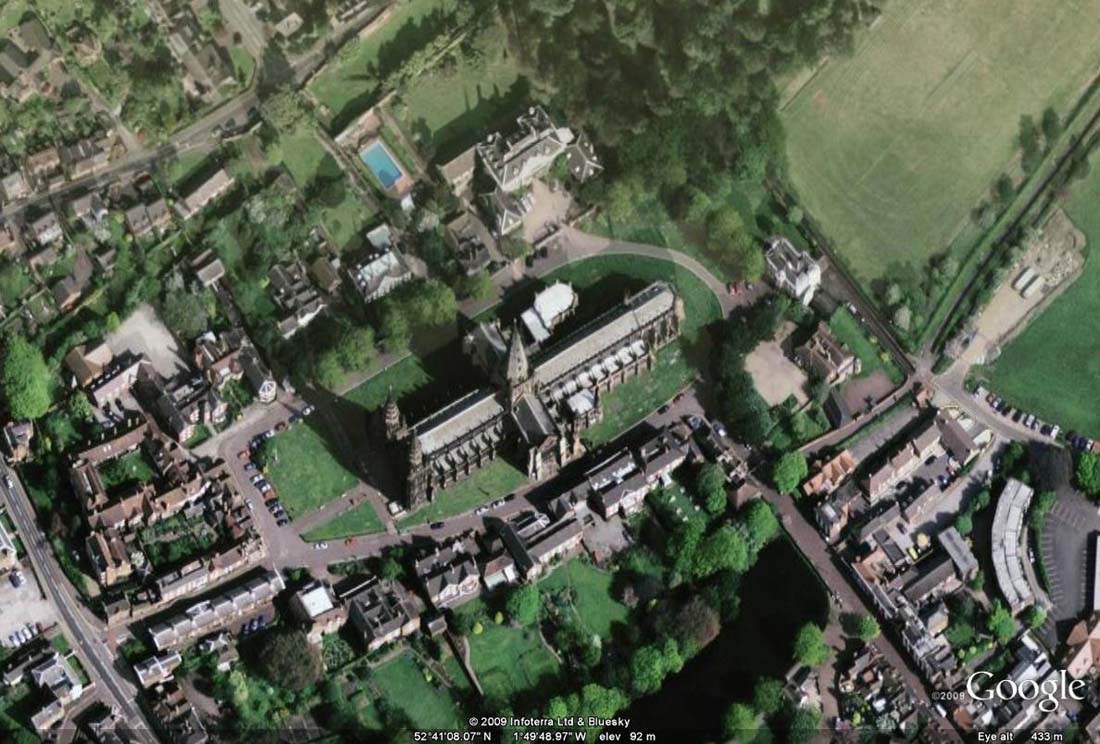 |
|
| 5th April 2009 | |
|
Not so much a day out as a trip up the road for me. I have just spent a very leisurely morning in Lichfield. On the religious calendar, its Palm Sunday, so the Cathedral was busy with services etc. I took the above linked video of the Cathedral from The Causeway, the side and the front with the bells ringing out and then the choir in full voice outside on the grass. I am not one for this sort of thing but it was pleasant enough and with a sunny Sunday morning, what more could you wish for? To make it even better I sat on a bench and watched a pair of Peregrine Falcons flying over and around the Cathedral rooftop. The earliest origins of Lichfield are obscure. In the first century a Roman fort called Letocetum was built two miles south of the present city at the strategic crossing of the major Roman roads of Ryknild Street and Watling Street (now the village of Wall). After the Romans left in the 5th century, a Celtic settlement may have continued in the area. Then in 669, according to the Venerable Bede, Chad moved his bishopric to a place called 'Licidfelth'. The first church probably stood on the site of the present cathedral, and the settlement quickly grew as the ecclesiastical centre of the Kingdom of Mercia. The development of the city was consolidated in the 12th century under Bishop Clinton who fortified the Close, and also laid out the town with the ladder-shaped street pattern that survives to this day. There was perhaps a degree of self interest in enlarging the township for the income from its rents was payable to the Bishop. You can read more here: http://www.lichfield.gov.uk/history.ihtml |
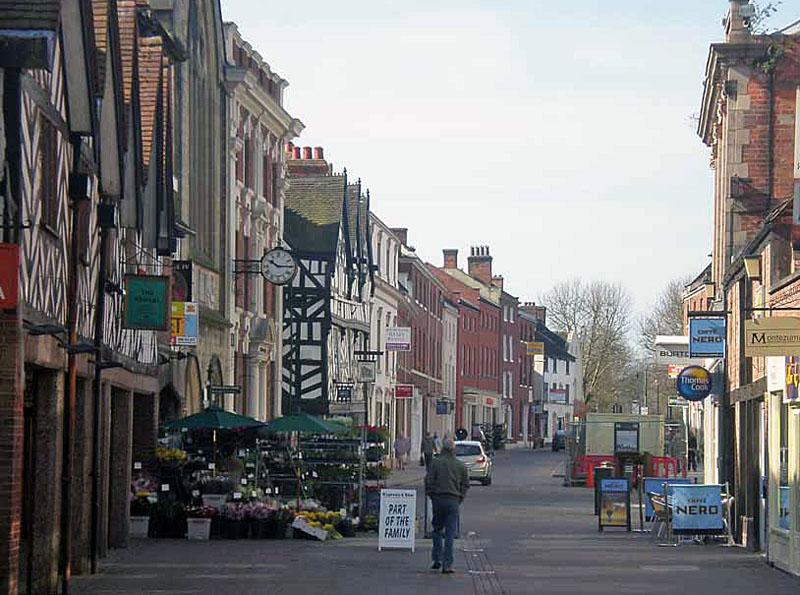 Market Street |
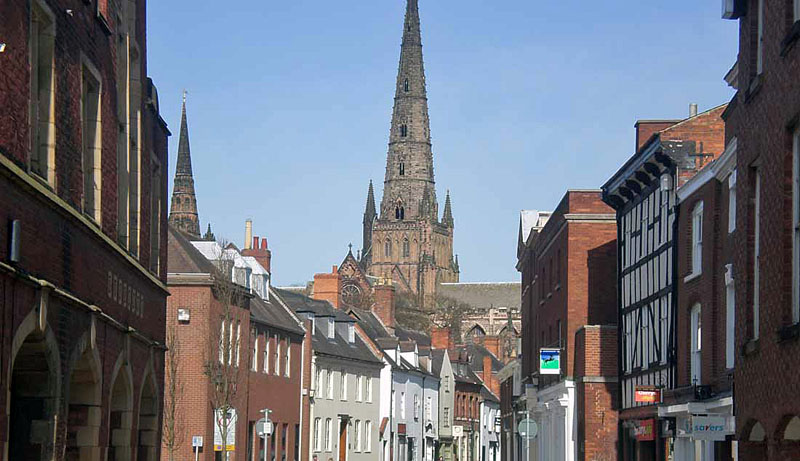 Dam Street |
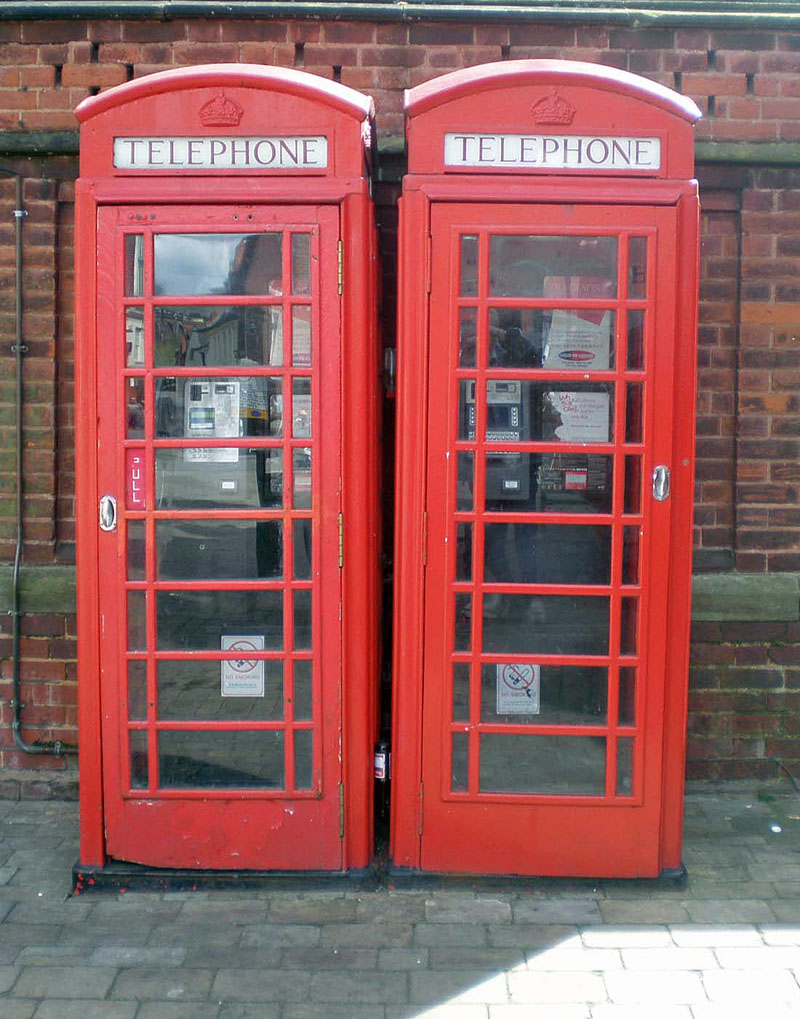 A sight rapidly disappearing from our streets as the phone people change them for ultra modern plastic canopy things. Note the artistically placed beer bottle jammed between the boxes. For those not of my age group, the forerunner of the teenage girl talk to each other on their mobile whilst walking together! Sorry, not suitable for texts! |
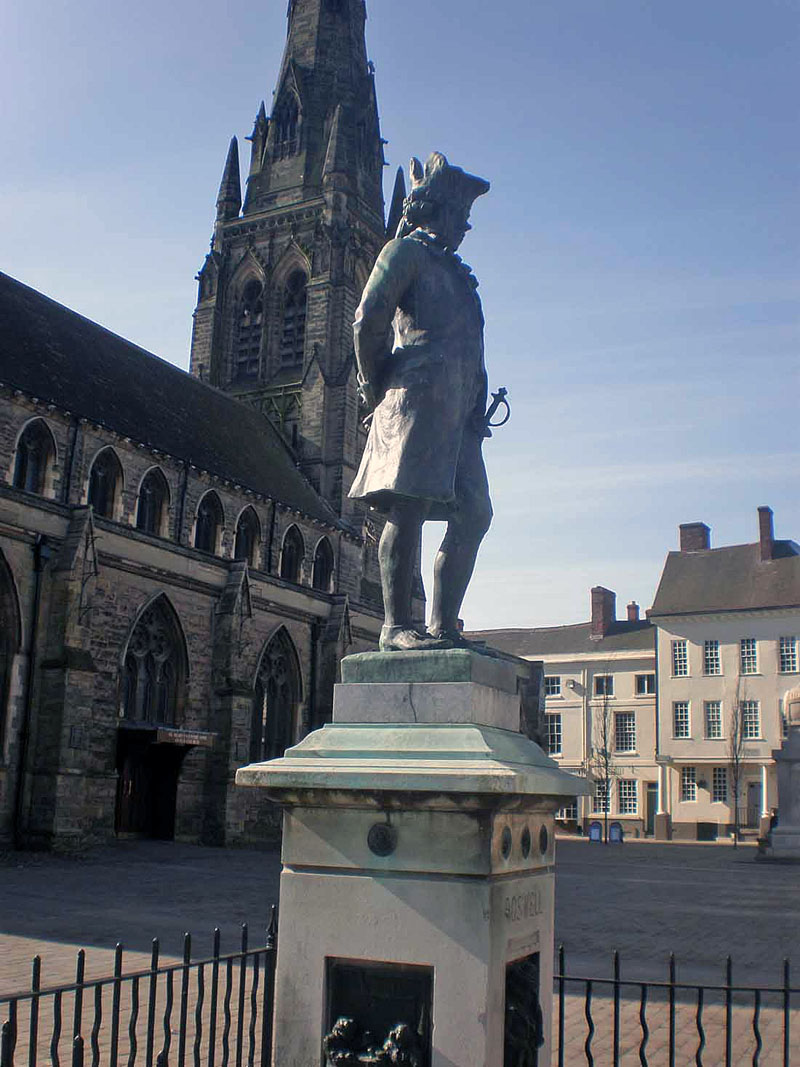 Boswell |
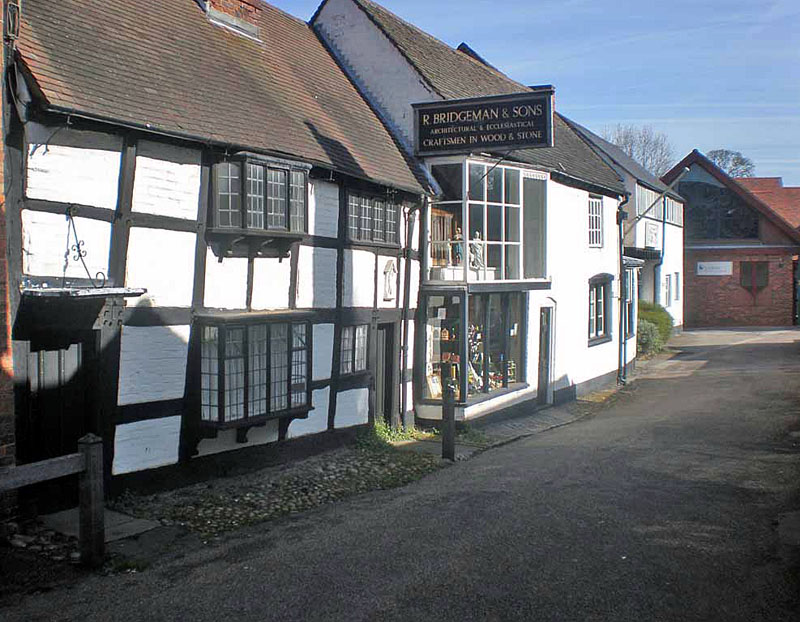 Side Street off Dam Street - Quonians Lane 2009  And again in December 2016 |
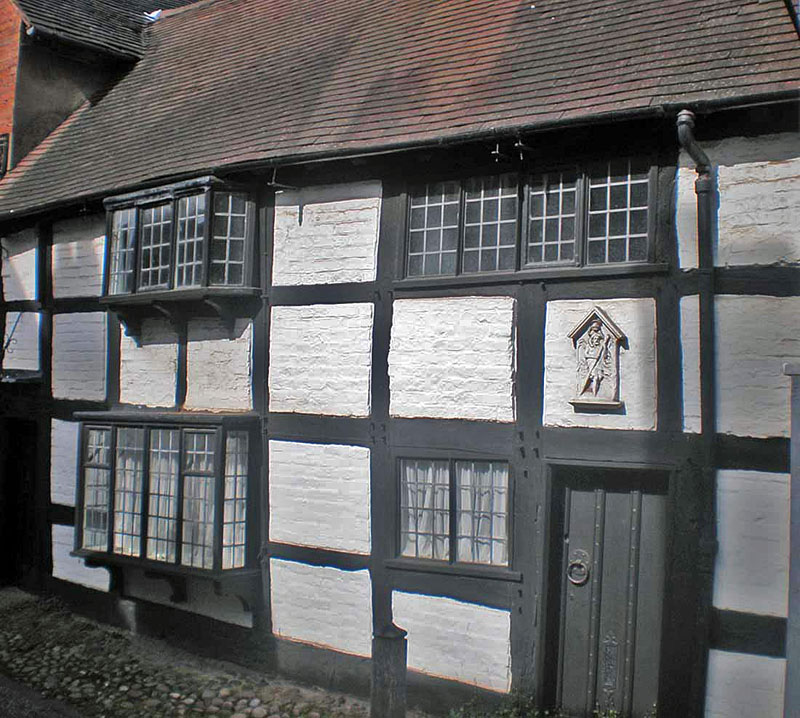 Another view of the same building as in the image above |
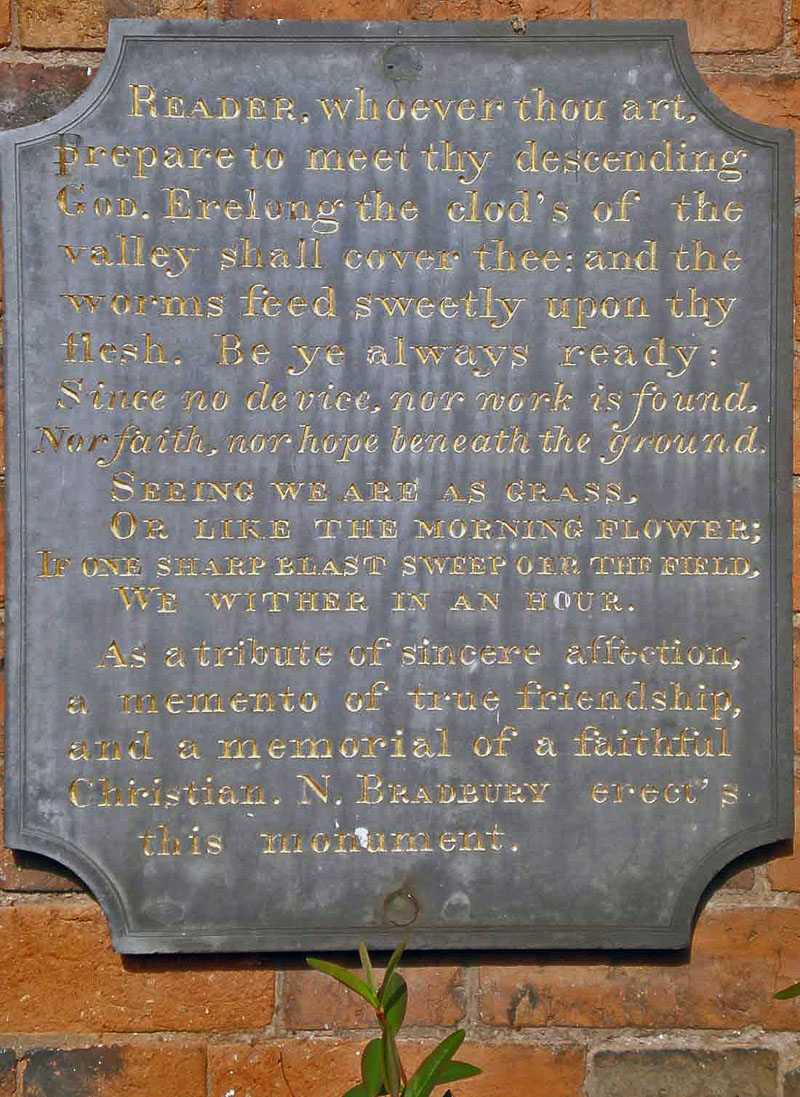 A rather strange plaque I spotted on the wall of a building down Quonians Lane |
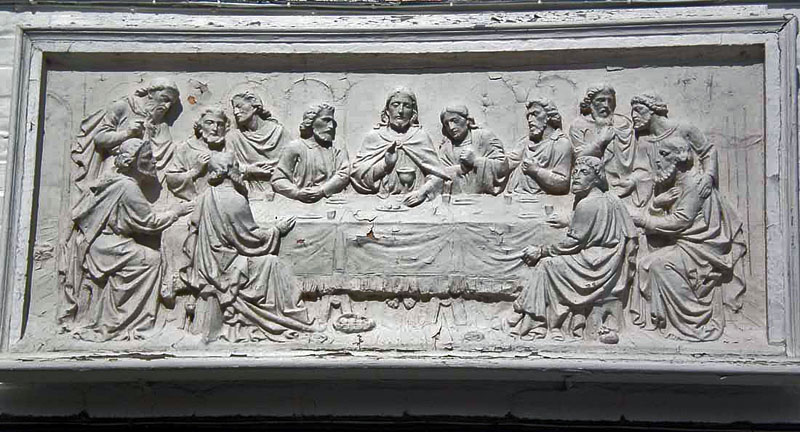 And, on the wall of the next building, this image of The Last Supper. |
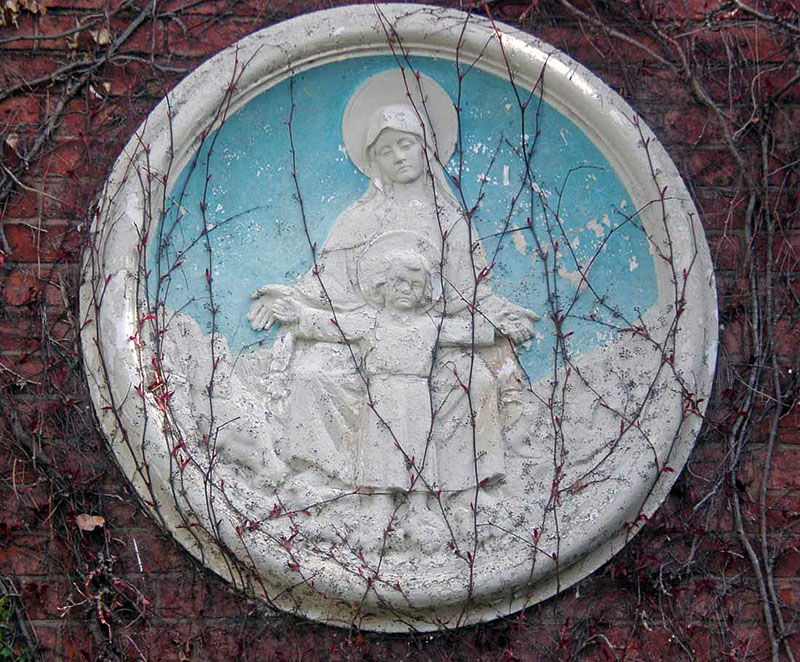 In the same street but around the bottom corner, to the right, this on the wall of another house. I can only presume all these building do, or did, belong the the Cathedral |
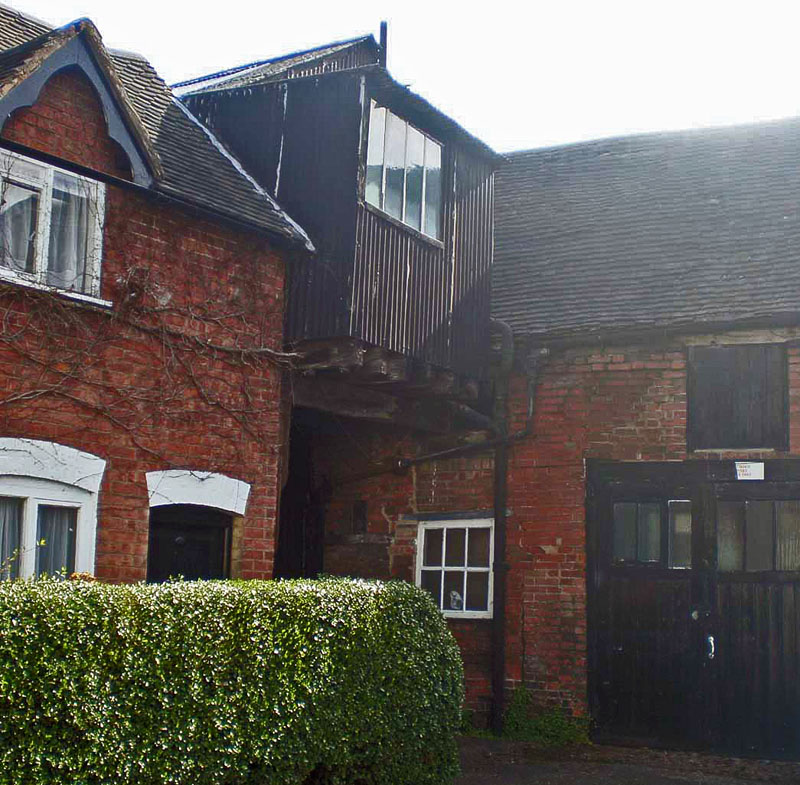 Something I have never seen before, this as I understand, is called a Garret? |
 Back onto Dam Street - Site of Infant School where Dr Samuel Johnson learnt 'his letters'. Now an ice cream parlour |
 Dam Street leading to the Cathedral. Had to laugh when I took this. A couple were walking towards me and suddenly hid their faces when they saw my camera in their direction. Should they not be seen together maybe? I cut them out of this!! |
 Dedication on a bench in the grounds, facing the front of the Cathedral. Australian Forces who trained nearby in WW2 |
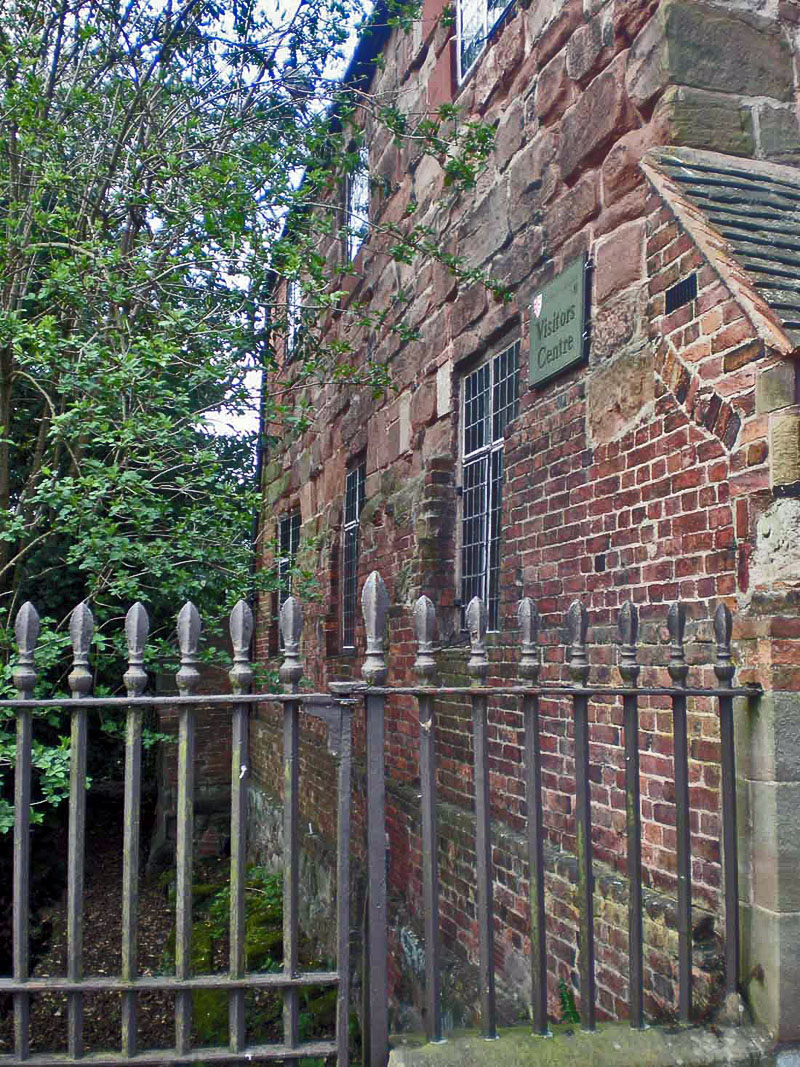 The rear of a Visitors Centre next to the Cathedral. Not sure what sort of Centre it is as it did not appear to be open for business. In 2009 |
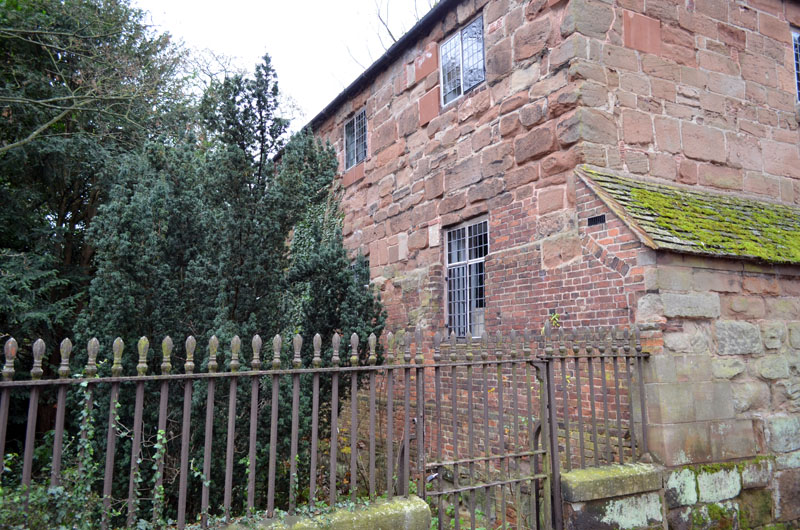 and again in 2016 |
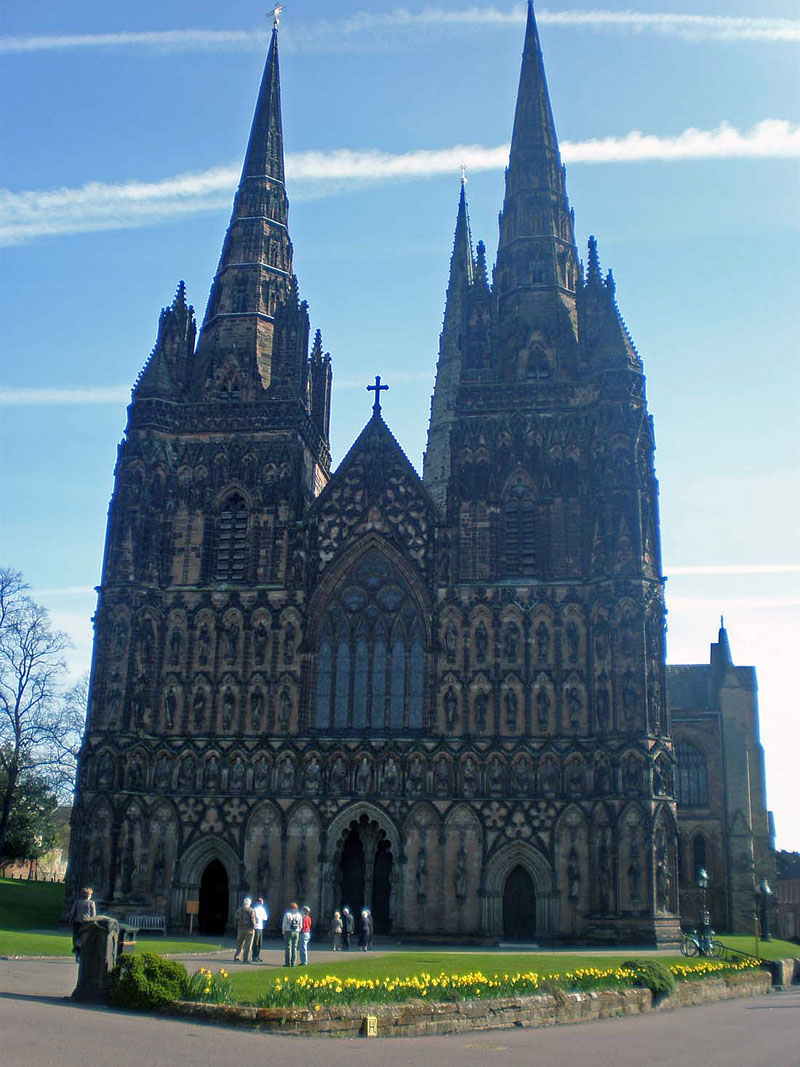 The front of the Cathedral with its many statues of Kings, and presumably, saints. Surrounding the building is The Close which was once the fortified walls (2009) |
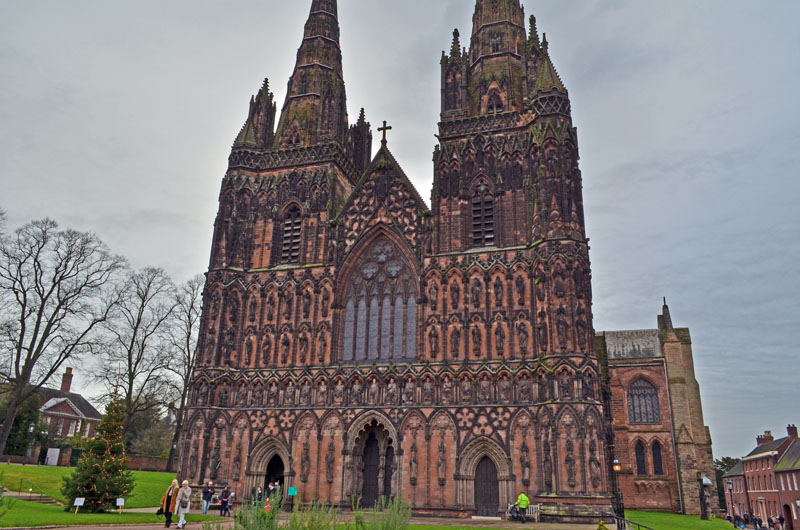 and in December 2016 |
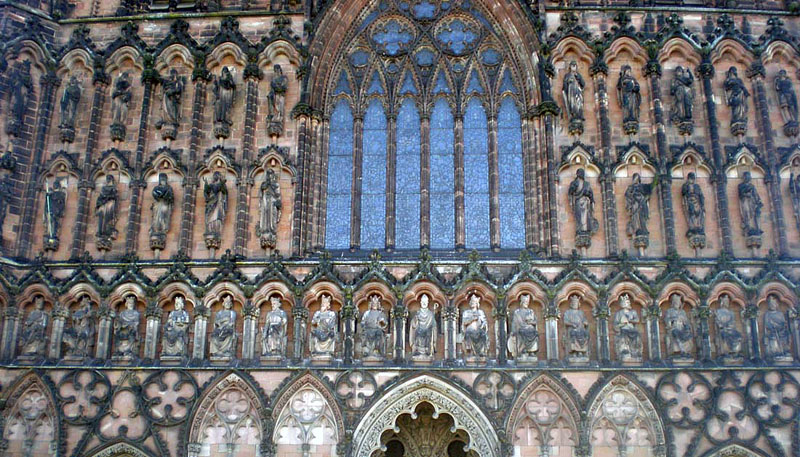 A Close up of the front centre |
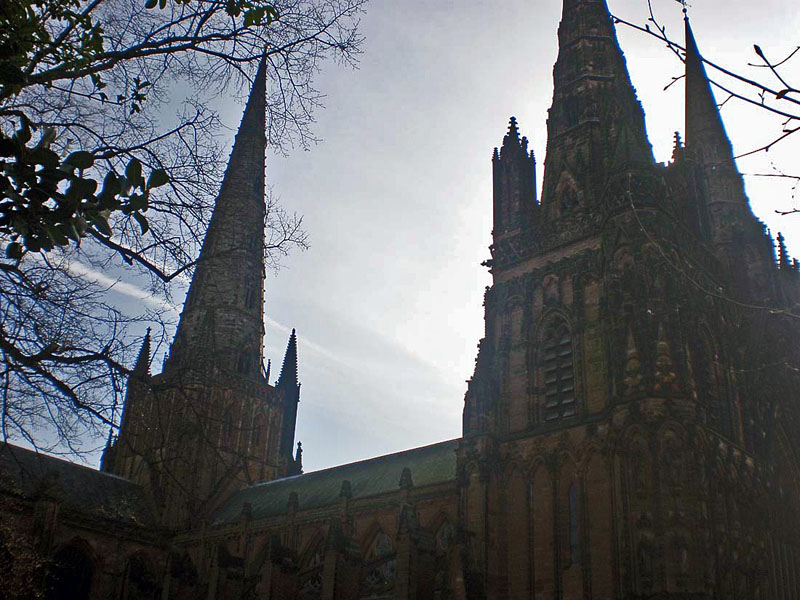 Three Spires |
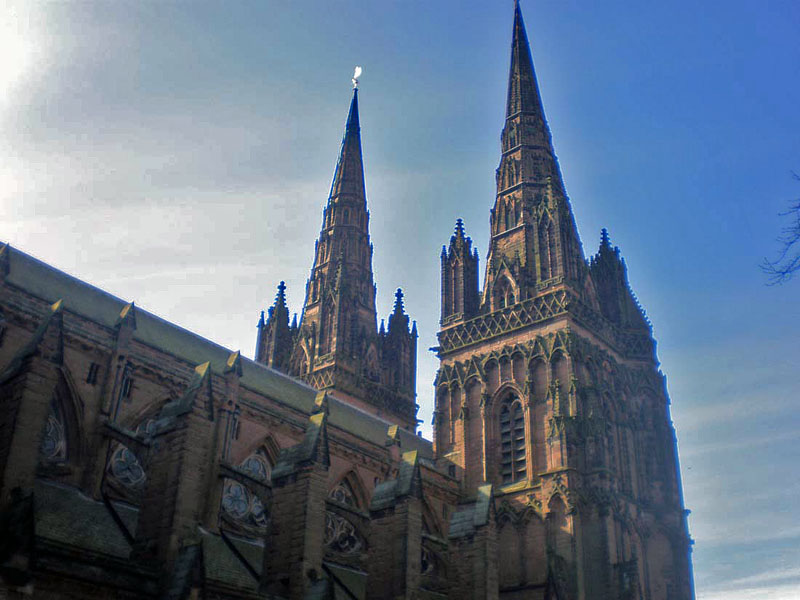 |
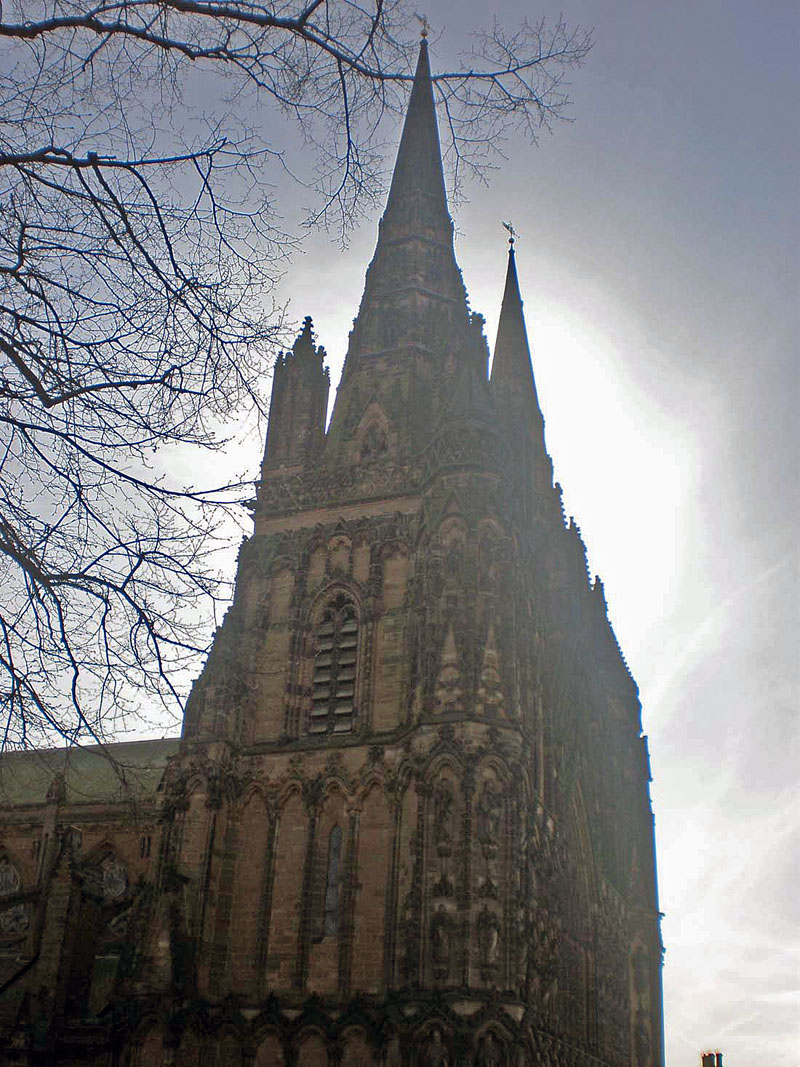 |
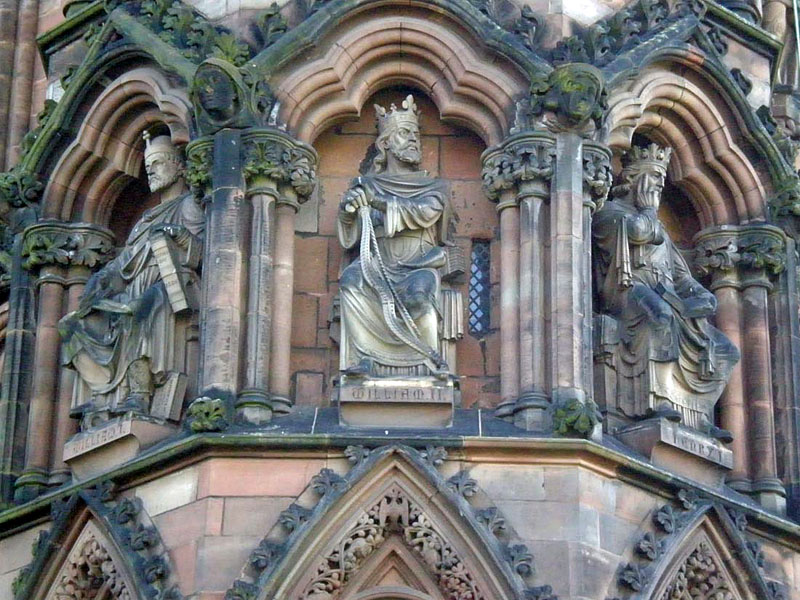 We Three Kings - William 1, William 2 and Henry 1 |
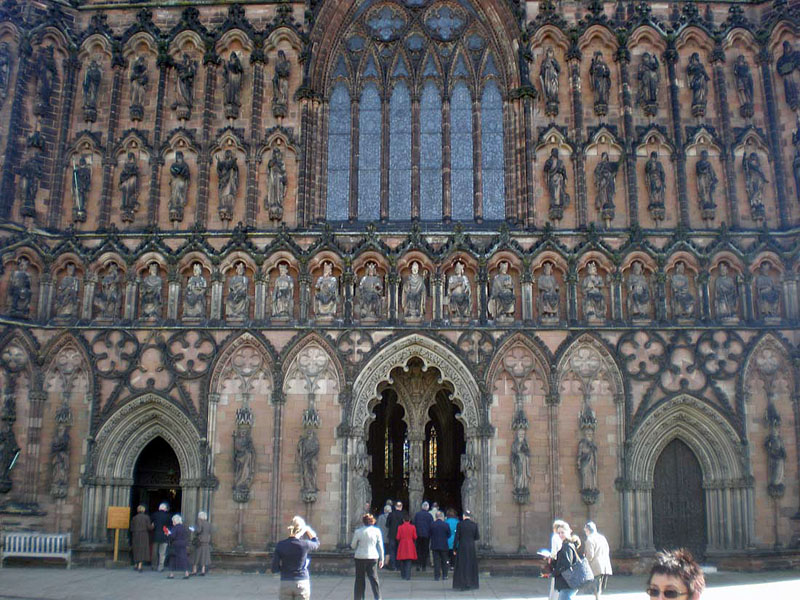 Another frontage view |
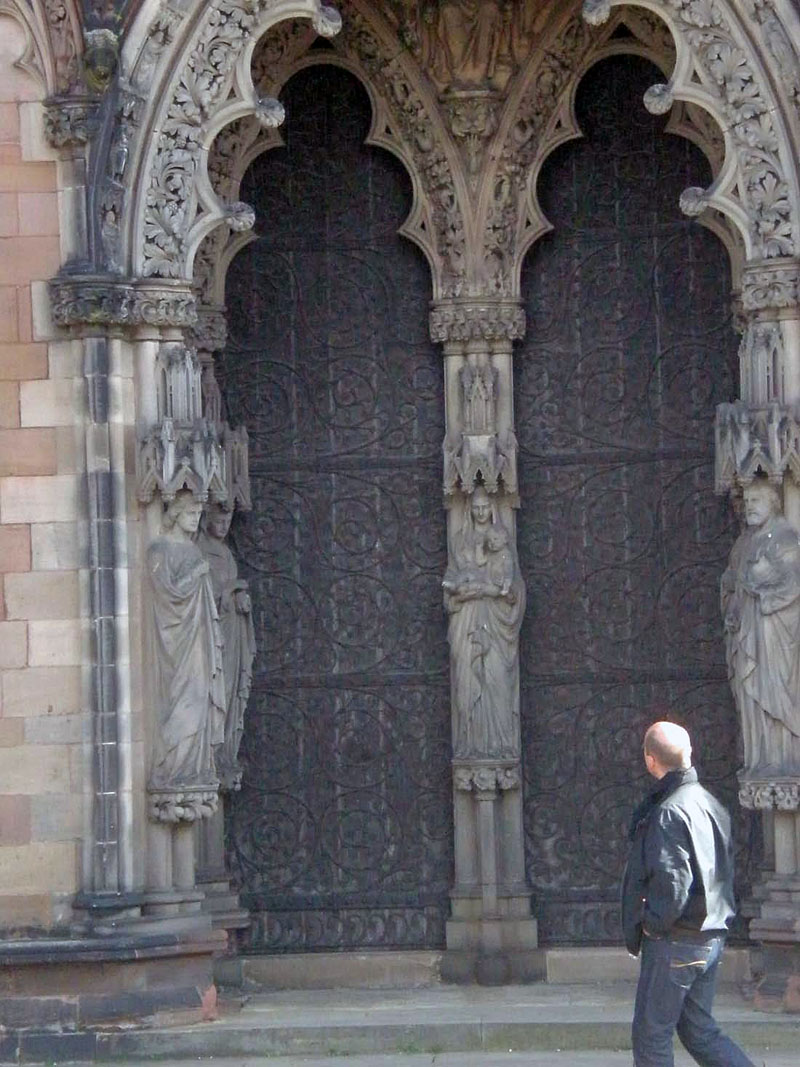 The central main doors |
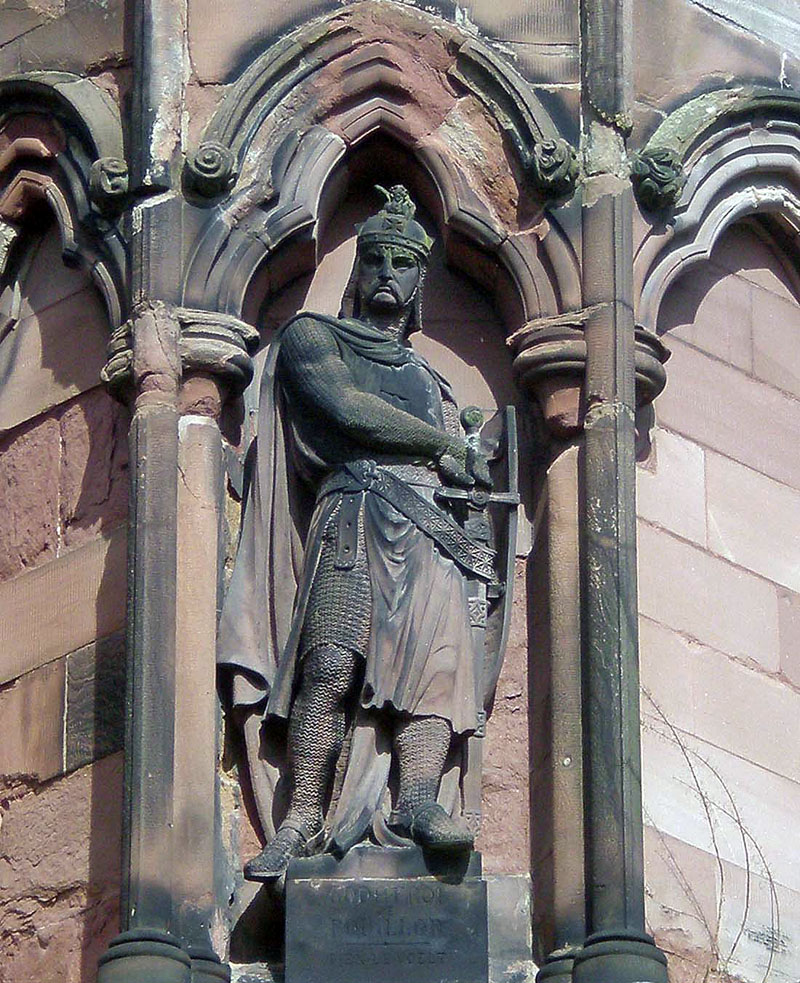 Godfrey? I cant quite make out the carving on the base. |
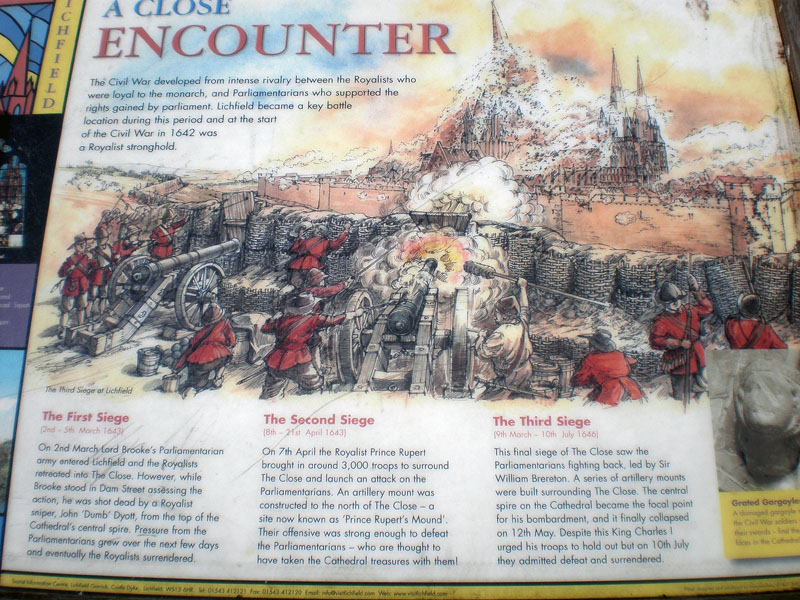 Description of the 3 sieges which were undertaken, 1. Parliamentary 2. Royalist (Rupert) and 3. Parliamentary. RIGHT: Denotes the 'gargoyles' defaced by Cromwellian troops by sharpening their swords. But these are NOT gargoyles but carvings inside the Cathedral (far left as you enter) as the gargoyles are actually OUTSIDE high on the walls. Situated on the north wall at the far (altar) end. |
 |
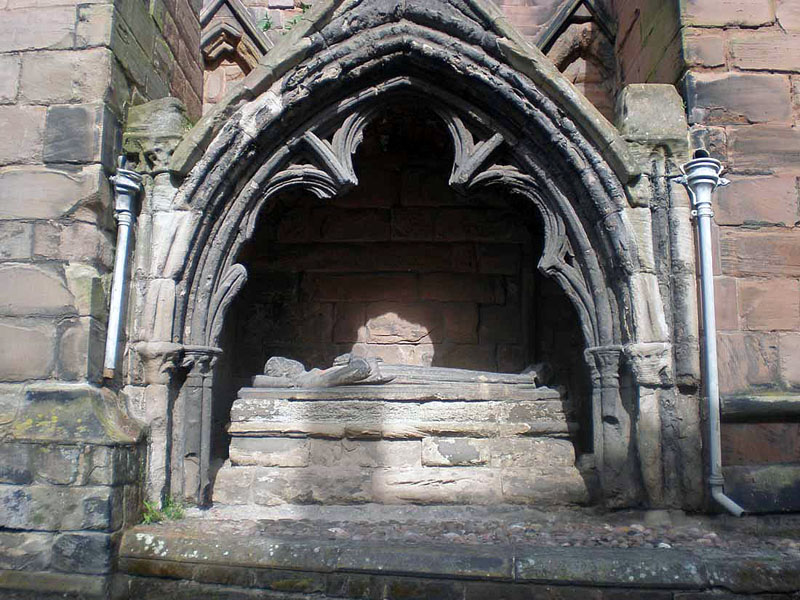 External grave or memorial in The Close (2009) |
 and again in December 2016 |
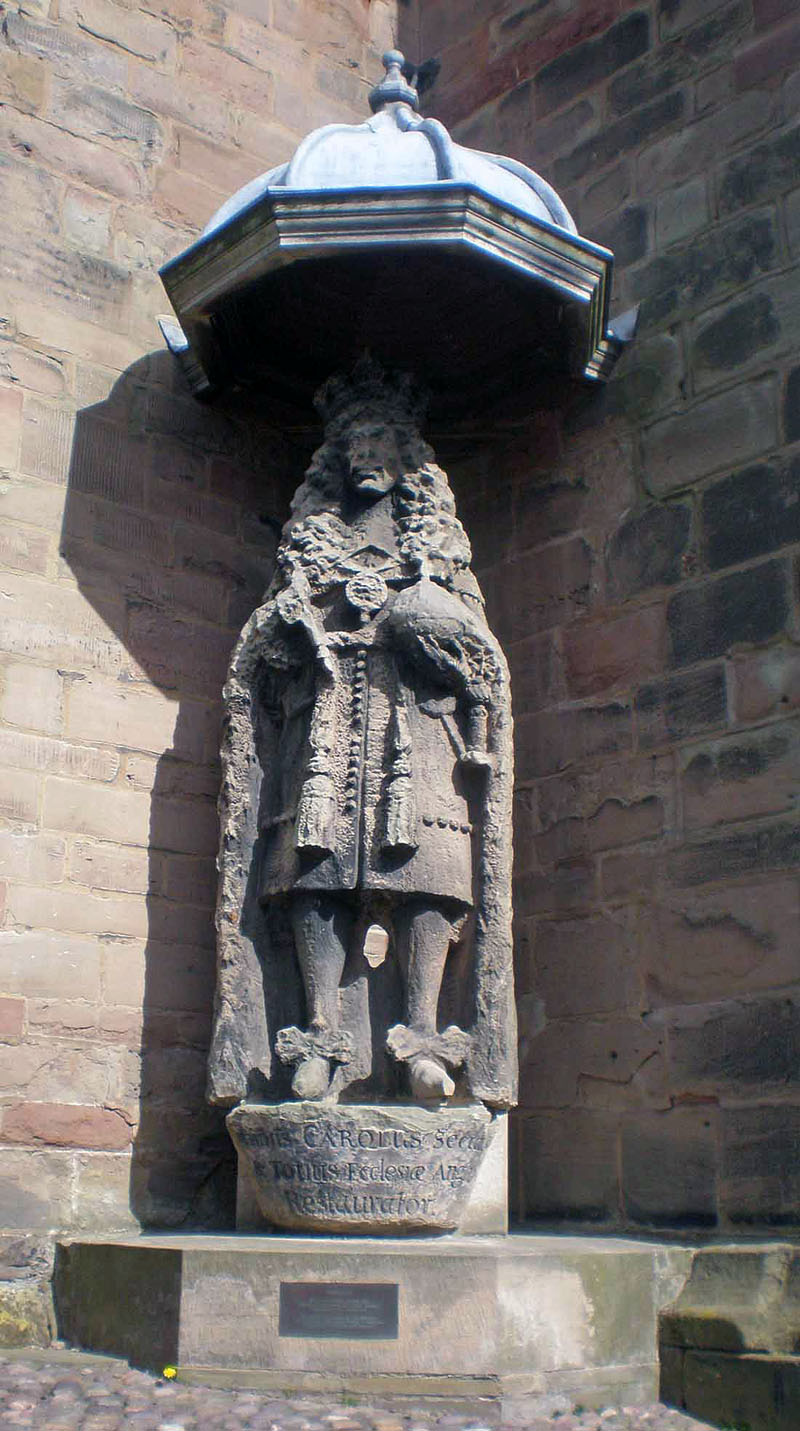 Statue of King Charles 2 who donated money and timber towards the restoration of the Cathedral following the Cromwellian destruction. (2009) |
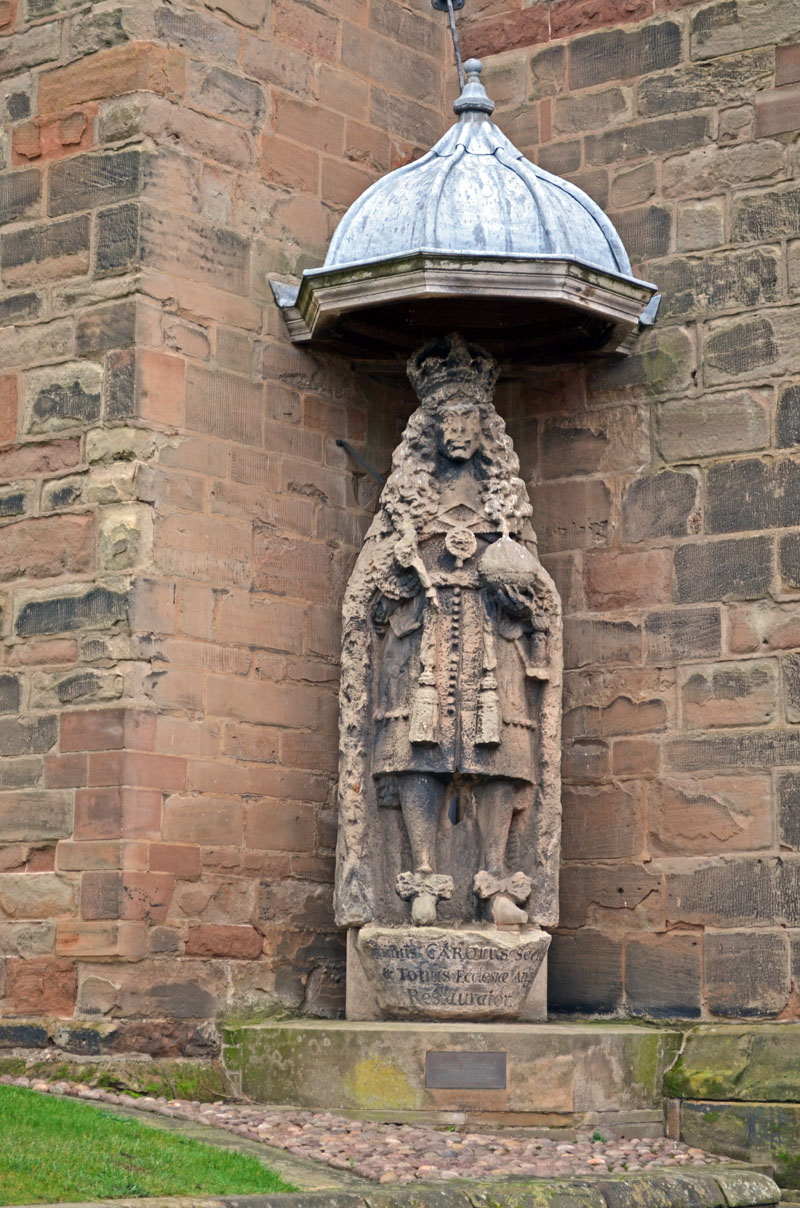 December 2016 |
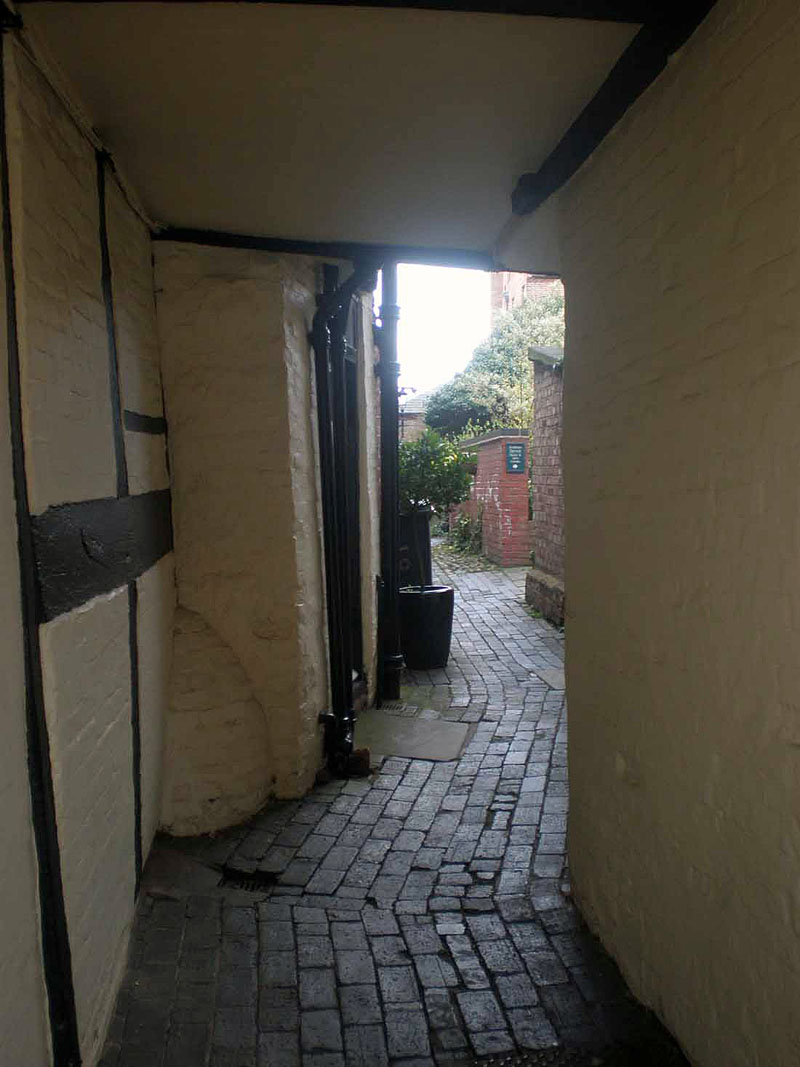 Opposite the Cathedral, a small passage leads into the Herb Gardens and home of Erasmus Darwin, the grandfather of Charles. Erasmus was a noted Botanist and Naturalist. See base of page. |
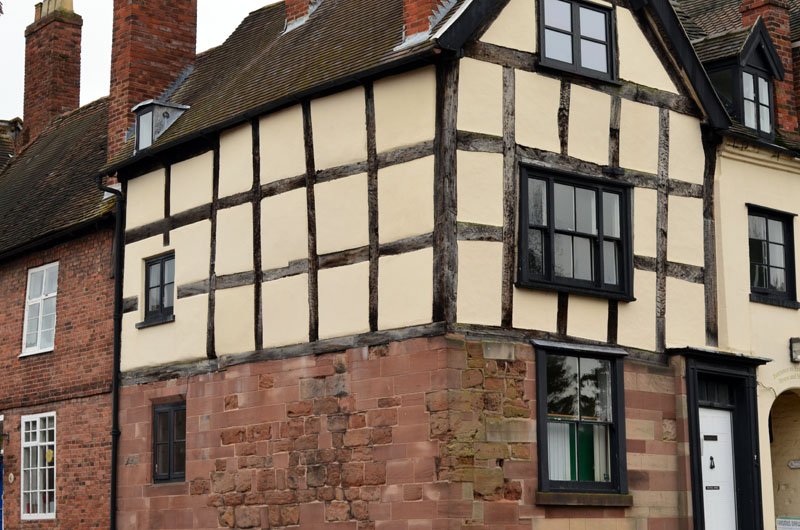 and the house in December 2016 |
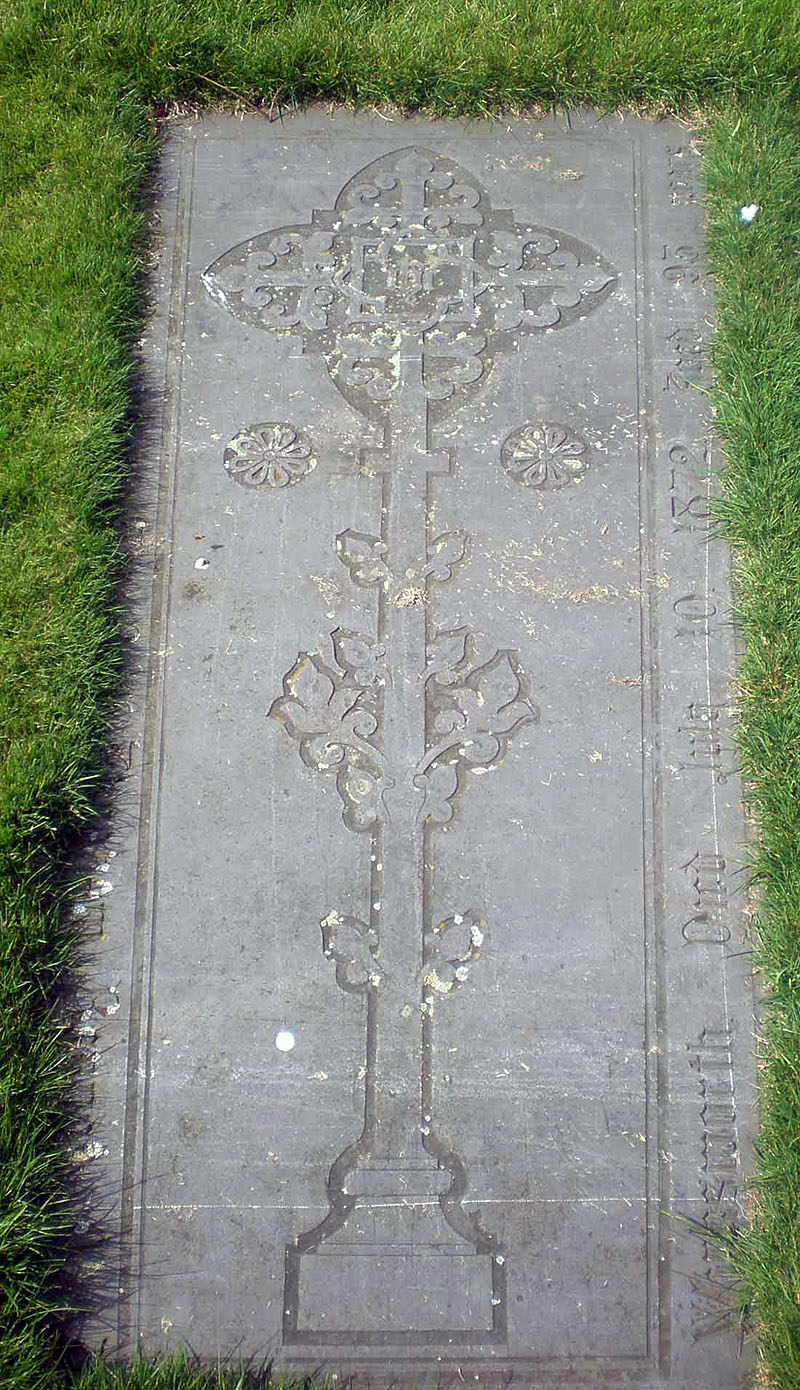 |
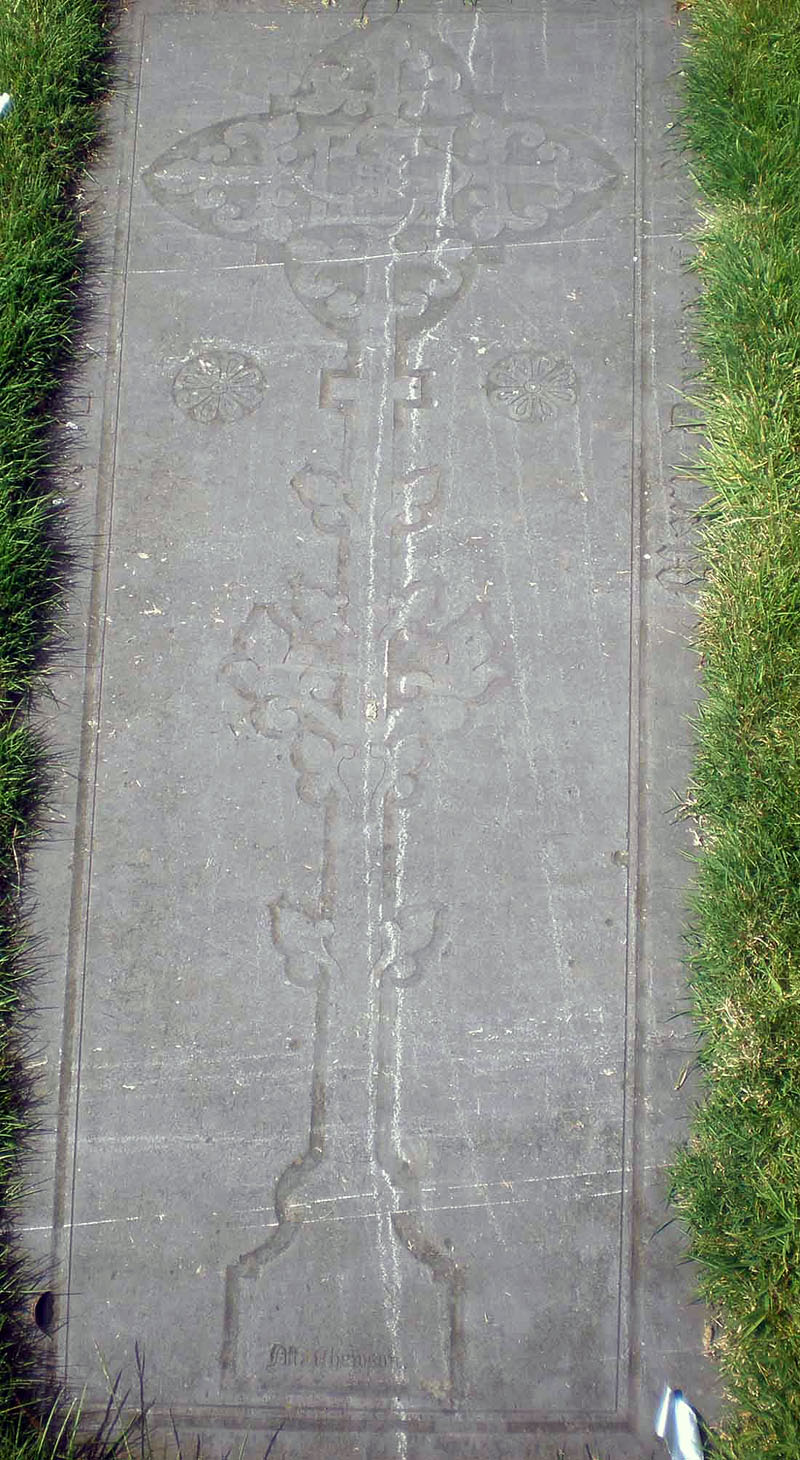 |
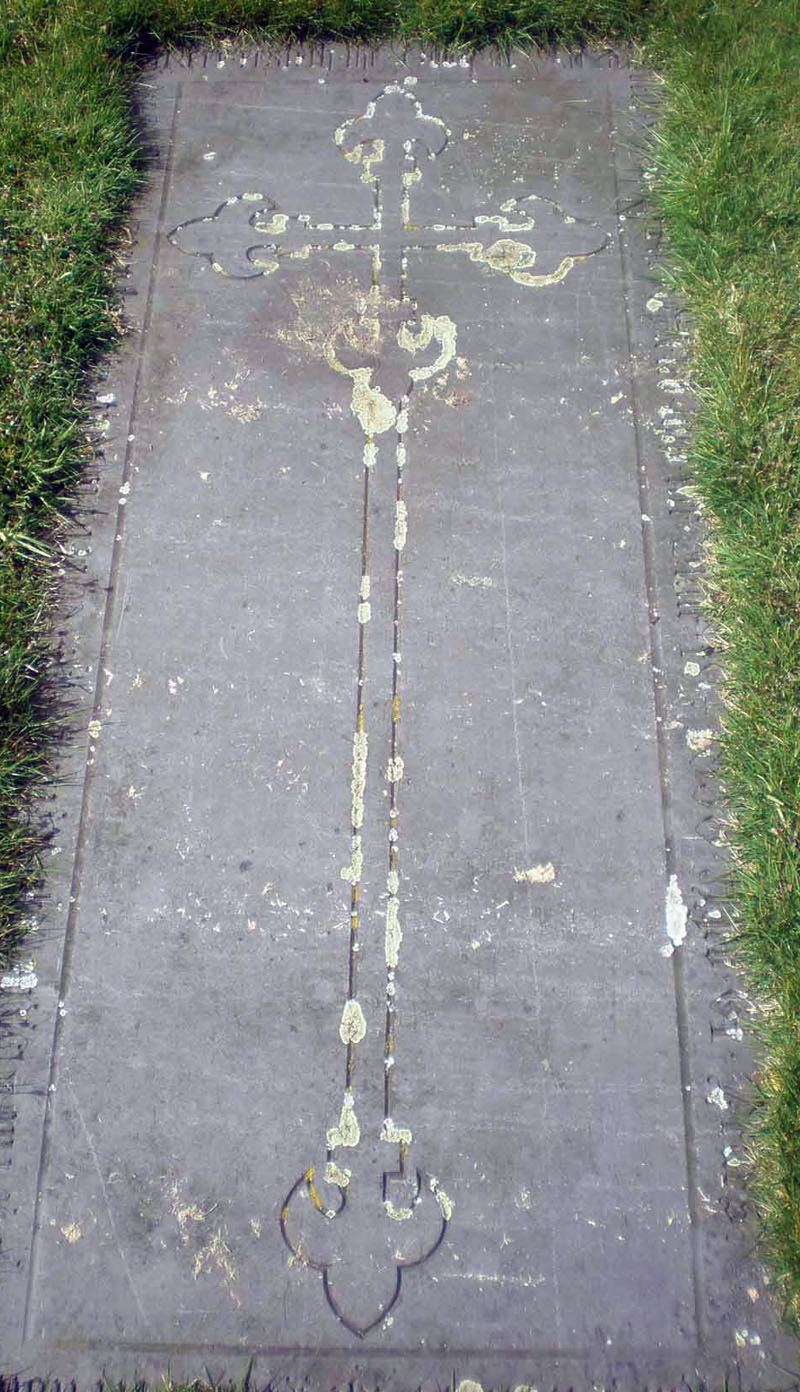 Three of the gravestones lying in the Cathedral grounds |
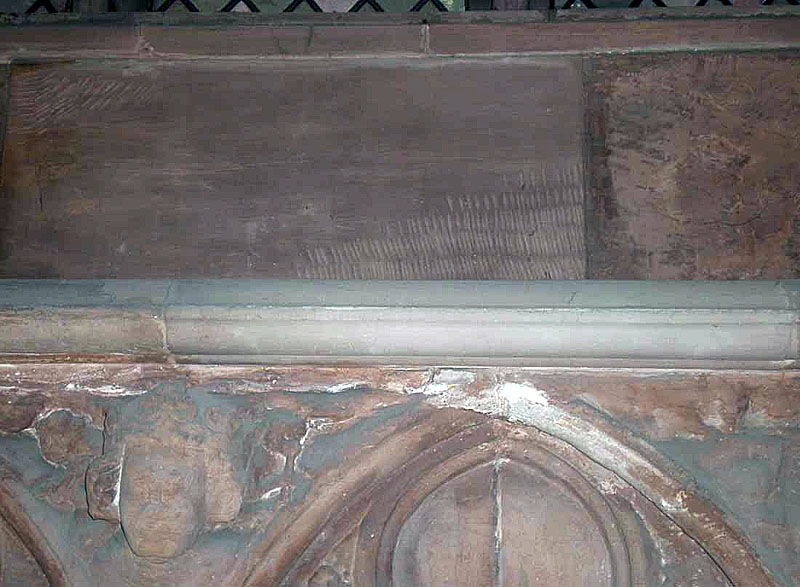 Above the defaced carvings can be seen these grooves in the stone. At this time I have no idea what they are. This is on the north wall at the far end. They could be arrow grooves, from archers sharpening them. |
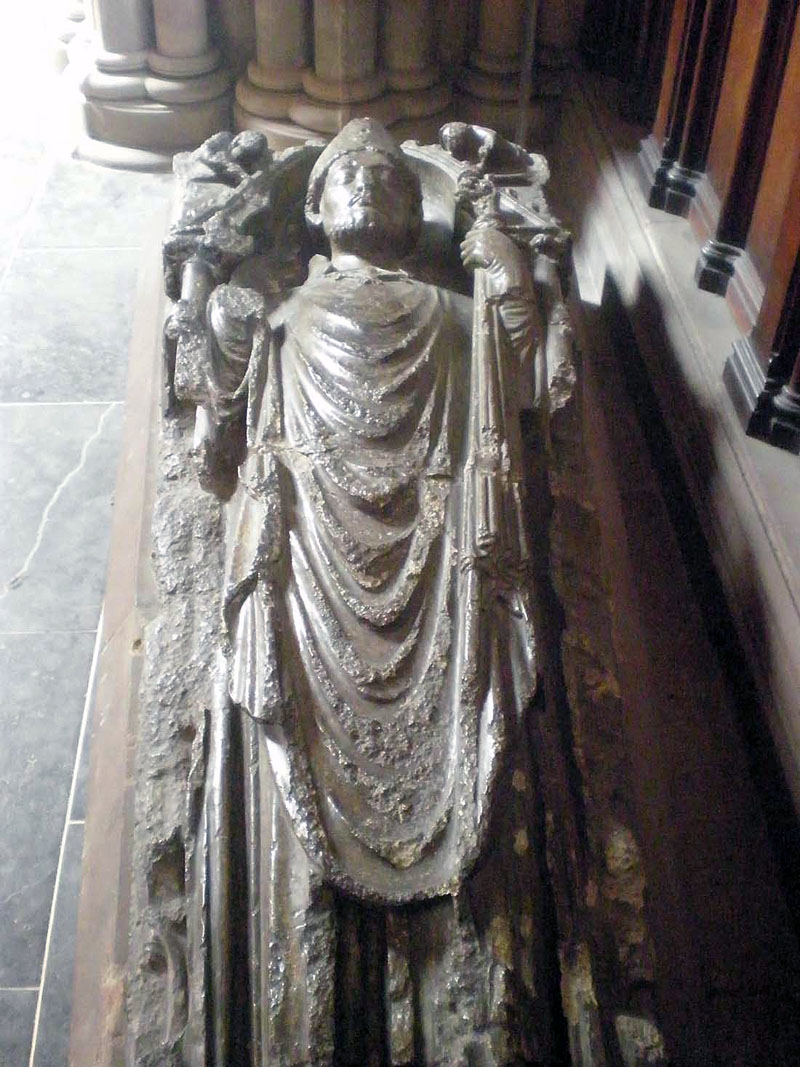 One of the more elaborately decorated graves |
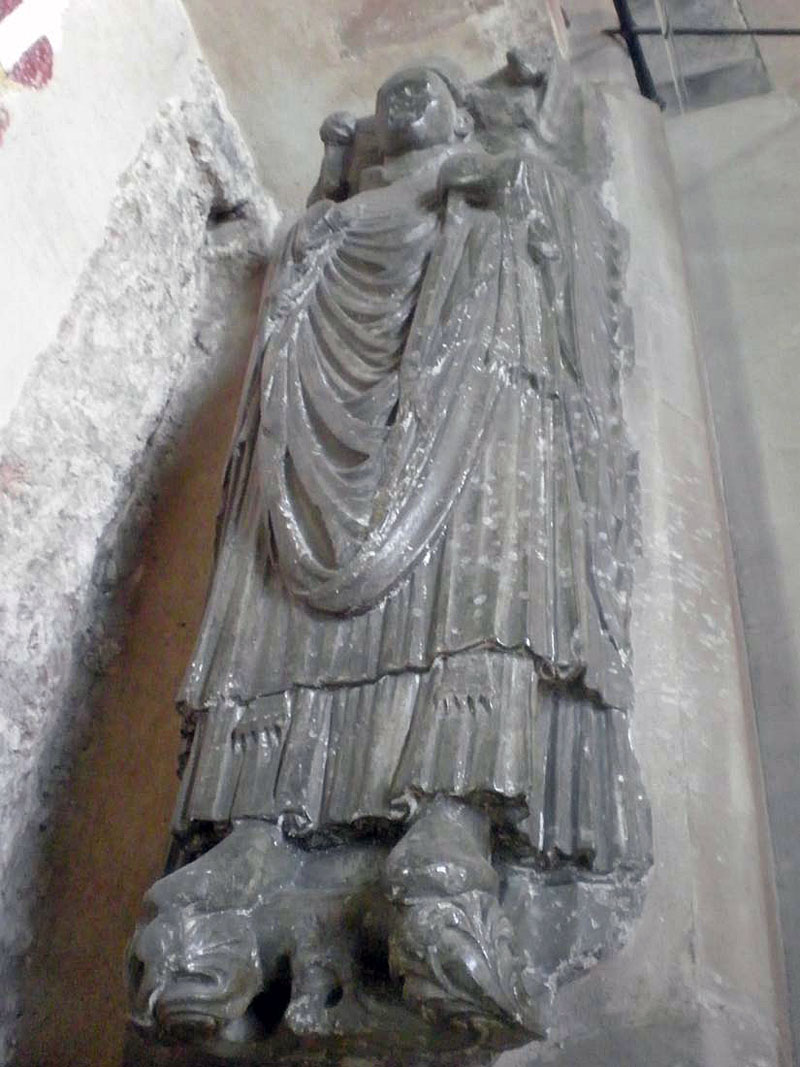 Bishop of around 1240 |
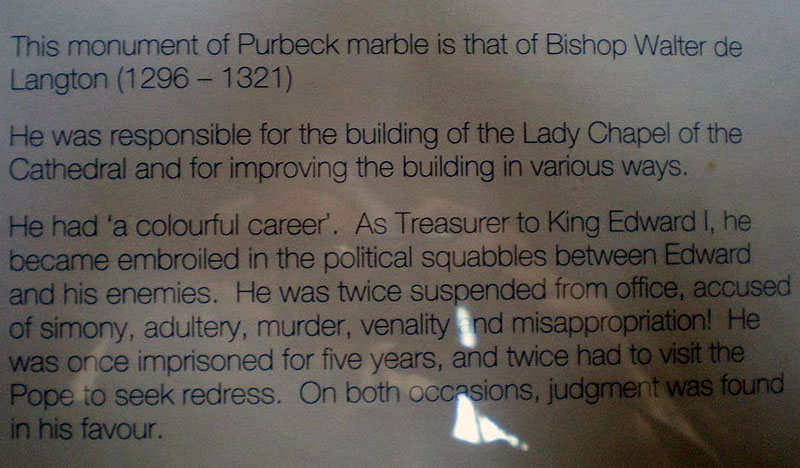 Read the plaque for a description of this more 'colourful' bishop |
 A very sad memorial to the lives of two children. In 1820 the sculptor, Francis Chantry, added another treasure, his monument of The Sleeping Children. The two young sisters, Ellen Jane and Marianne, died in 1812, soon after their father. Chantry’s sensitive treatment of the subject has made this monument, at the end of the south choir aisle, a focal point for visitors ever since |
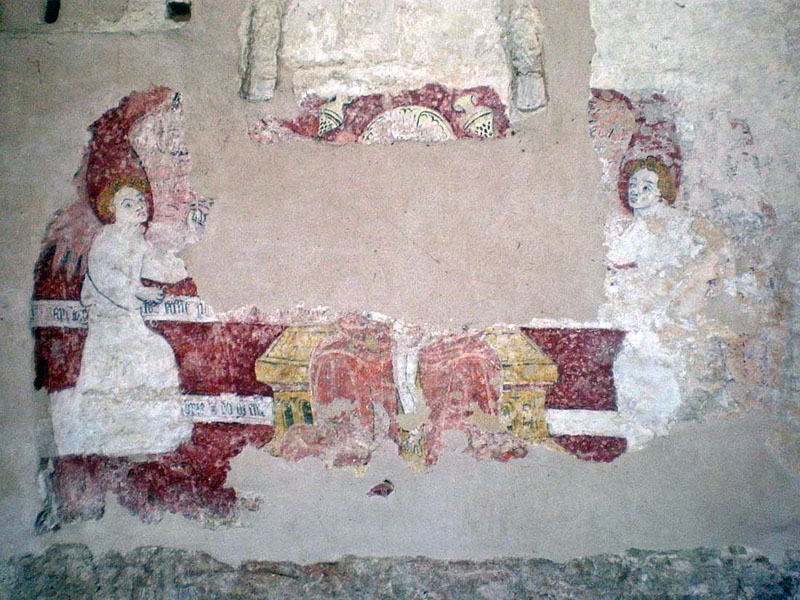 The remains of a medieval wall painting of the Trinity. This area was once a chantry chancel. |
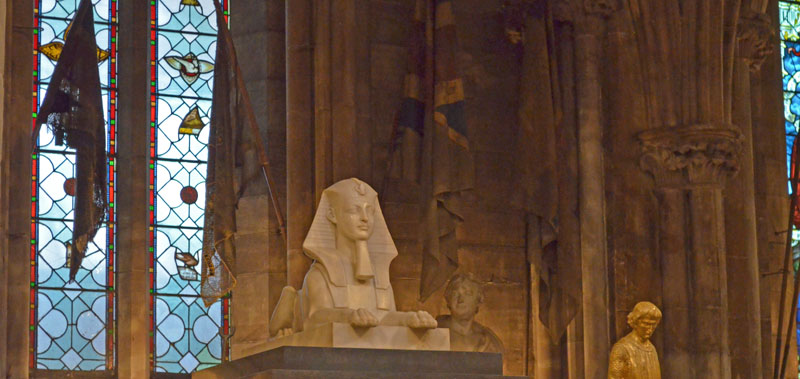 |
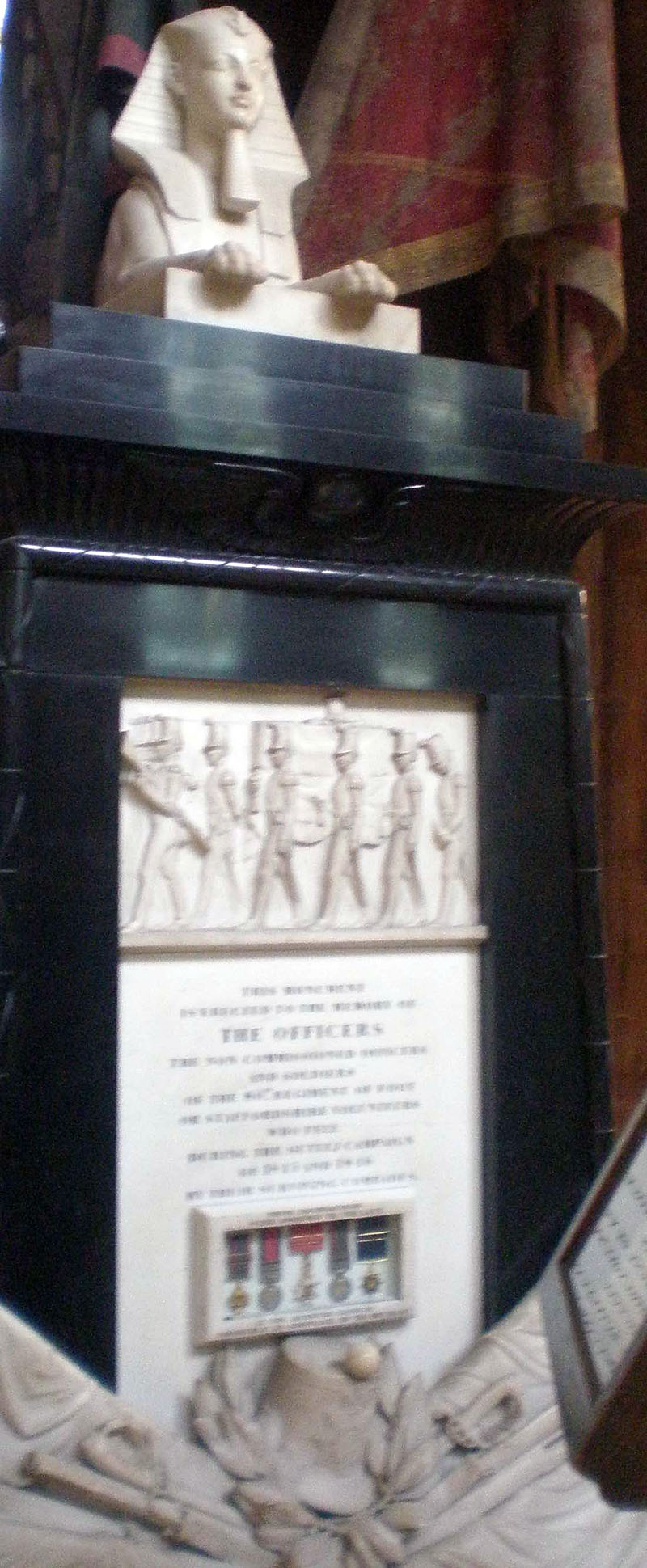 Memorial to the losses suffered by a local Regiment |
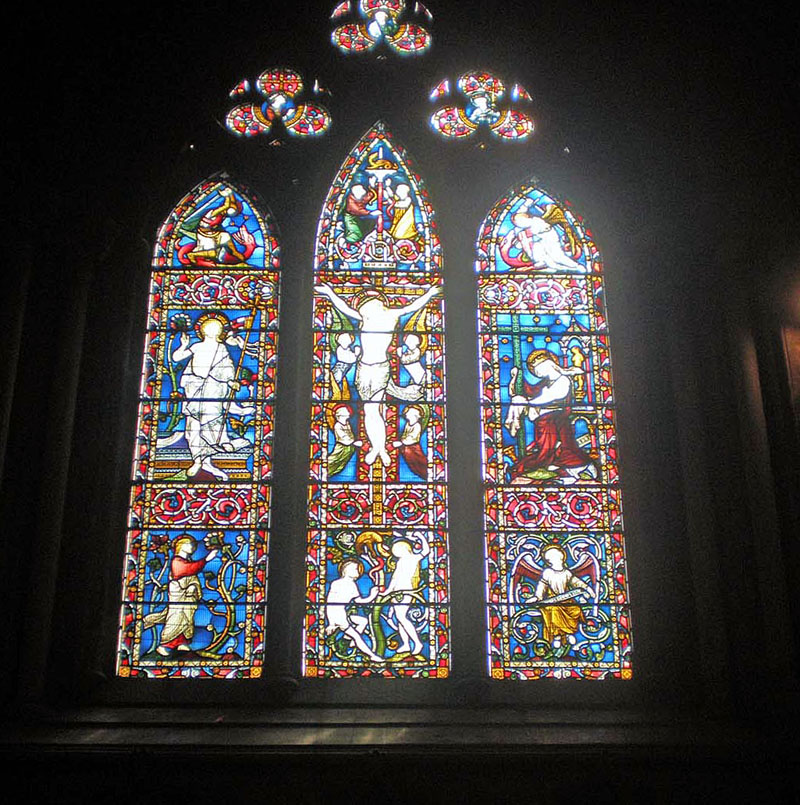 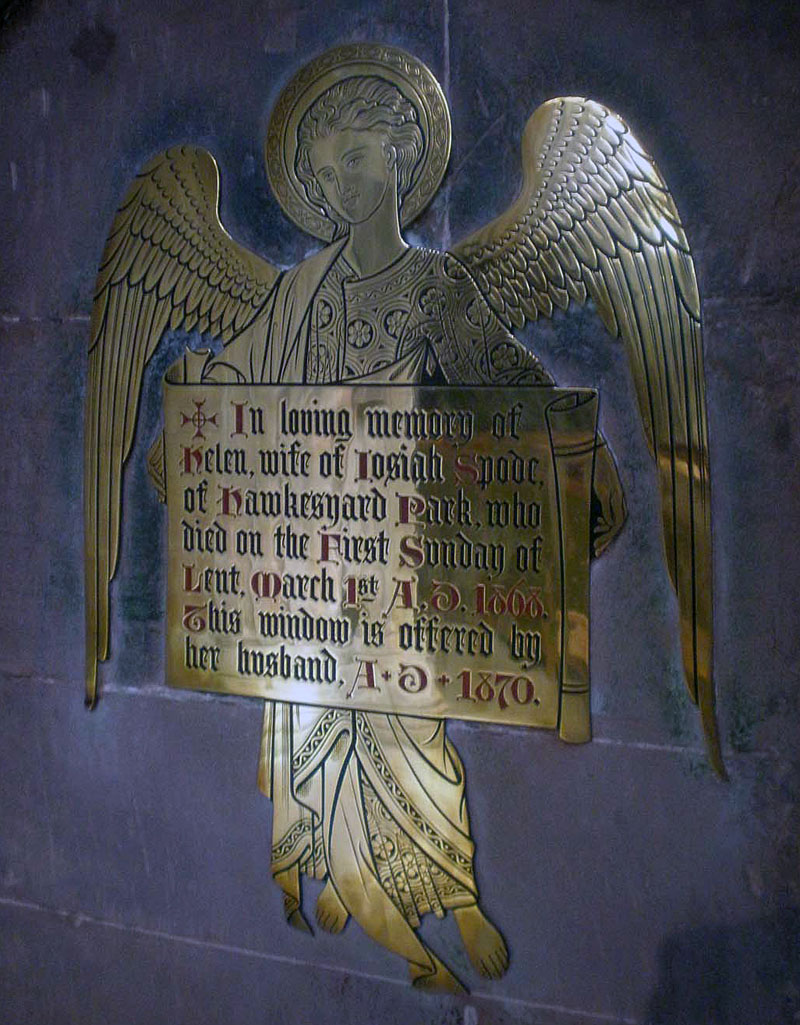 A window donation in memory of a mans deceased wife. |
| A visit to Lichfield on December 10th 2016 | |
 |
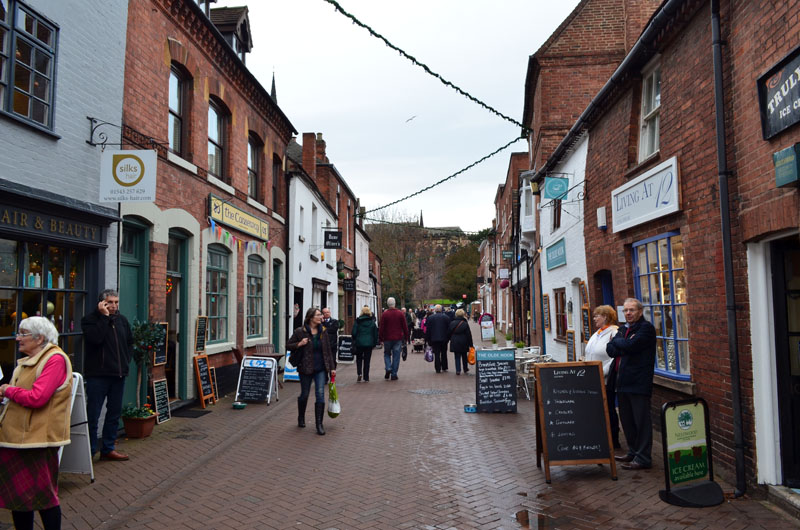 |
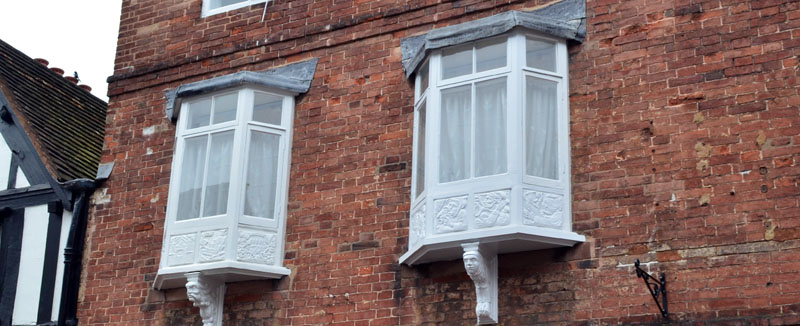 |
 |
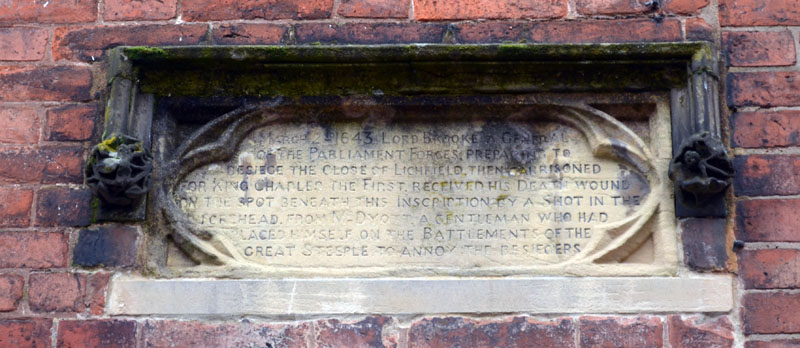 |
|
| Just seventeen miles north of Birmingham, Lichfield lies at the heart of England. 1300 years ago it stood at the centre of the Kingdom of Mercia. When Chad was made Bishop of Mercia in 669 he moved his See from Repton to Lichfield, which may already have been a holy site since there is a legend that Christians were martyred there under the Roman Emperor Diocletian! When Chad died in 672 pilgrims began to come to his shrine, and in 700, Bishop Hedda built a new church to house his bones. Starting in 1085 and continuing through the twelfth century this Saxon church was replaced by a Norman Cathedral, and this in turn by the Gothic Cathedral begun in 1195. | Erasmus Darwin, grandfather of Charles, was a notable scientist and doctor. His inventive mind enabled him to contribute to the Industrial Revolution especially in the Potteries, and through the Lunar Society he greatly influenced intellectual life. Rationalism and scepticism marked this Age of Reason and Darwin, although he lived in the shadow of the cathedral, is best described as an agnostic. He was certainly critical of the Church. The house which he built, facing Beacon Street, is still owned by the Chapter, and is now the Erasmus Darwin Centre. Samuel Johnson, by contrast, was a staunch churchman. Born in Breadmarket Street (the house still stands), he was educated in Dame Oliver’s School in Dam Street. He went to London with David Garrick, the actor, and achieved fame as a writer and lexicographer with the compilation of his great English Dictionary. |
| Pilgrimage to the shrine of Chad continued throughout this period, the Cathedral was expanded by the addition of a Lady Chapel, and there were perhaps as many as twenty altars around the Cathedral by 1500. All this changed at the reformation, and the Cathedral was severely damaged during the Civil War being under siege three times. | His religious practice is well documented. He worshipped regularly in St. Mary’s Church in the square. These two very different men were both visitors to the house of Anna Seward, the ‘Swan of Lichfield’, who lived in the Bishop’s Palace. In her writings about them she clearly preferred Darwin. |
| Bishop Hacket restored the Cathedral in the 1660s, and William Wyatt made substantial changes to its ordering in the eighteenth century, but it was Sir George Gilbert Scott, Cathedral Architect from 1855-1878, who was responsible for its successful restoration to Medieval splendour. Today, Lichfield Cathedral still stands at the heart of the Diocese. The great building shows all the signs of its long history of a Christian community now moving confidently into the twenty-first century. | |
http://www.lichfield-cathedral.org/
http://www.lichfield-cathedral.org/visiting/history/saxon
http://www.lichfield-cathedral.org/visiting/history/norman
http://www.lichfield-cathedral.org/visiting/history/gothic
http://www.lichfield-cathedral.org/visiting/history/civil-war
http://www.lichfield-cathedral.org/visiting/history/18th-century
http://www.lichfield-cathedral.org/visiting/history/19th-century
http://www.lichfield-cathedral.org/visiting/history/today